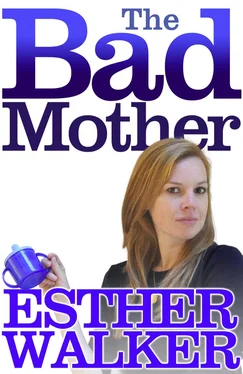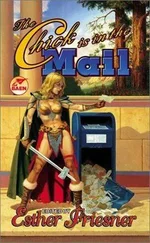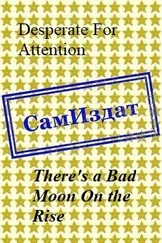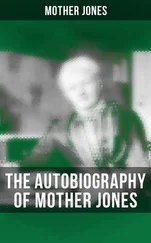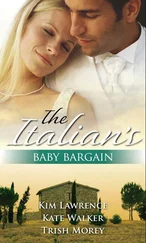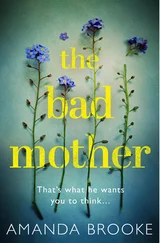A friend had to exclusively breastfeed her child for four months in order to prevent passing on some severe genetic allergies. Not a drop of formula must pass its lips. It was very hard for her. The child was big, hungry and screamed after insufficient feeds. She was confined to the house and on a strict feed-pump-feed-pump plan. It was exhausting but she did it. But far from zooming off into the stratosphere with evangelism, she told me, later, that with her second child she would not hesitate to give an additional bottle of formula at night. ‘It was insanity not to,’ she said.
I punched the air. She is my most competitive and over-achieving friend and she agreed with me. I was right! Formula was not poison!
I am a reasonably rational, normal person and yet I found myself doing that awful, unforgivable thing that mothers often do, which is to subtly or not subtly bully other, newer mothers into doing things the same way that they did, so as to assuage fears about their choices. There is safety in numbers, we unconsciously think – if we all do this, it will make it okay.
If I had decided to breastfeed exclusively, and it had been inconvenient for me and difficult and painful and exhausting but I had persevered and done it, I would feel the same way about that. I would have needed to believe that the sacrifices I had made – time, pain, suffering – had been worth something. It can’t all have been pointless! It must have been essential to my child’s wellbeing! I would definitely have tried to suggest quietly to other new mothers that if they didn’t do what I had done, they were doing their child harm.
It’s dreadful, really – and I am extremely relieved that I can leave that instinct far behind me and be a normal person again. If you tell me that you want to exclusively breastfeed your child and it is very hard and tiring, the baby screams all the time – which once upon a time would have been a red rag to a bull – I will now say, ‘Mmm, yes. You are being very brave. You can only do what you think is best! Would you like some tea?’
The good news is that breastfeeding is the worst of it. What you feed your kids when they are on solids is still a thing , but you are no longer mad, wild-eyed, panicked and vulnerable. If your five-month-old gobbles down Ella’s pouches like it’s only got one more day on earth, or you do your own purees, or you do baby-led weaning or whatever, people will push you around far less for your choice.
Having said all that, I feel sad for myself and for Kitty when I think about how clumsily I approached her weaning. I was still so overwrought, confused, tired and strung out by the time Kitty reached weaning age that the thought of fussing about during Kitty’s precious naptimes with an assortment of vegetable purees, which she might or might not eat, made me feel quite ill.
So I fed her rusk mashed up with milk and mixed it with those fruity Ella’s pouches. I often attempted to give her the vegetable pouches too, but she wasn’t that crazy about them. But that is what she ate for weeks and weeks – rusk and milk, Ella’s fruity pouches. Nothing really wrong with that, but food you make yourself is lovely – it’s delicious. But I, personally, couldn’t face making it for her because I was just too crushed by it all.
Lazy! Lazy and selfish! I wish I could spend an hour with that old me, shake my shoulders, maybe give me a smart slap with one or two baby food cookbooks.
I also didn’t know how much Kitty was supposed to eat. I compared her, endlessly, with other children – often with my ravenous nephews, who would suck down plates of pasta like they were soup, crunching through apples and sandwiches and pints of milk like waste disposal units.
I would sit for an hour, coaxing Kitty to eat just one more spoonful of this or that. Please, I would think, please, please just eat this.
Then I read a book called My Child Won’t Eat! , by a Spanish nutritionist called Carlos Gonzalez, and it changed my life.
First of all, it completely re-calibrated my idea of how much, and what, Kitty was eating. The horror stories of children who refused to eat anything for days, lost weight, went yellow or bruised at the slightest touch, made me realise that Kitty’s diet was entirely fine. She ate a bit of this, a bit of that. Some things she wouldn’t countenance, but other things she would surprise me by trying. She was not constipated, or underweight, or constantly exhausted, or a funny colour.
She was thriving and I hadn’t even noticed.
‘Stop making mealtimes a stress!’ said the book. Relax! No child will starve itself. Give your child the opportunity to be hungry at mealtimes by not stuffing them – out of anxiety – full of crackers between meals. You say when meals are and what meals are, but the child says how much. What matters is that fruit and vegetables are always or nearly always offered, not that they are always eaten or finished.
After I read the book I felt like I was flying. I felt released from the crushing burden of failing to feed my child the requisite amounts of spinach and kale. I hugged this information to myself. I was released, set free. I felt as relieved as I did when I stopped trying to breastfeed. I fell to my knees, palms turned in suicidal supplication to the sky, and I gave thanks for this mercy.
With my second child, Sam, born two years and three months after Kitty, I might as well have been a different person. My expectations from my life were so different. I did not – I do not – require several hours to myself to sit on the sofa and stare at the wall in blank horror at what my life has become.
Even if I have been kept awake the night before, there is too much to do. And I don’t mind doing it, now. When I had Kitty I couldn’t believe how often I was expected to cook. Now I am just so grateful that I’ve got all the correct stuff – plenty of chopping boards and knives, really sharp speed-peelers, a hand blender. When there is a quiet moment in the house I do not sit and stare, I put on my apron and start chopping, cooking and blending.
As soon as Sam required weaning I reached for two popular and sensible baby food recipe books and I methodically went through the purees to find ones that he liked. Baby-led weaning was not an option. This boy was starving and I just needed to funnel food into his tummy – milk was not enough. First time around, these books had freaked me out with their fussy little amounts – 40g of this and 120g of that. Now I looked upon them as my saviour. I didn’t have to think! Just do what it says here.
Then I chopped, cooked and blended … chopped, cooked and blended … chopped, cooked and blended. I bought more storage pots and a special pen to write on the pots what was inside. Then I chopped and cooked and blended. Again, again, again. Repeat. Again.
And Sam responded, opening his gob for food. More, more, more! He was like a sideshow at a circus. Watch the enormous monster baby eat! Down went another spoonful, and another, and another! All sorts of different permutations of vegetable, a fish one, a chicken one, a beef one, macaroni cheese made with microscopic little flower-shaped pasta bits …
It’s nothing I did to make him such a dustbin; he’s just a big boy and hungry all the time. But I do sometimes wonder if I did Kitty a disservice by not approaching her weaning in the same way.
No matter. As Sam approached a year and didn’t want to suck down purees any more but was too incompetent to feed himself, there was about a six-week period where things were a bit rocky. What to feed him now – what, what?? And, selfishly, what could I feed him that I could potentially also feed Kitty so that we weren’t doing that ghastly thing where I was making two separate dinners? I ended up doing a thing where I would chew Sam’s food for him and feed him by hand.
Читать дальше
